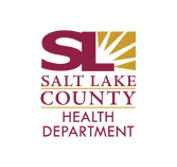Probable First Case of Measles in Salt Lake County
Community members encouraged to be current on MMR vaccine and to cooperate with public health
SALT LAKE COUNTY— The Salt Lake County Health Department (SLCoHD) announced today that they have identified what is likely the first case of measles in Salt Lake County in the current nationwide outbreak. SLCoHD was alerted to the probable case late Monday, October 27, and spent yesterday attempting to contact the patient to conduct a disease investigation.
“The patient has declined to be tested, or to fully participate in our disease investigation, so we will not be able to technically confirm the illness or properly do contact tracing to warn anyone with whom the patient may have had contact,” said Dorothy Adams, SLCoHD executive director. “But based on the specific symptoms reported by the healthcare provider and the limited conversation our investigators have had with the patient, this is very likely a case of measles in someone living in Salt Lake County.”
Officials ask that if a public health worker contacts you, please speak with them and provide the information they’re seeking so they can properly investigate the situation and hopefully prevent further illness in our community.
“Information we get during illness interviews is completely confidential, and we do not share it with anyone—including federal, state, or other local government agencies,” continued Adams. “We collect the information only to investigate the source of illness and attempt to prevent further spread.”
Community members who are contacted by the public health system can confirm a public health worker’s legitimacy by ensuring emails are coming from a .gov email address, such as @SaltLakeCounty.gov. They can confirm contact made by phone by asking the worker to send an email from the worker’s verified .gov email address. They may also call a publicly listed phone number for their state or local health department (385-468-4100 for SLCoHD) and ask to be transferred to the investigator who called them.
Measles is one of the most contagious viruses known. It is so easily spread that people who are not immune have a 90% chance of getting the disease if they are near an infected person. Someone with measles can spread it to others even before they know they are ill, and the virus can linger in the air for up to two hours after an infected person has left the area.
The best protection against measles is to be immunized with two doses of a measles-containing vaccine, which is most commonly the MMR (measles, mumps and rubella) vaccine. Two doses of MMR vaccine prevent more than 97 percent of measles infections. In the remaining 3 percent of circumstances—when a fully vaccinated person catches measles—the symptoms are milder, the illness is shorter and the infected person is less likely to spread the disease to others. Unvaccinated people, including children too young to be vaccinated, are more likely to have severe complications from a measles infection.
Measles vaccine recommendations vary based on age and vaccination history:
- Children should receive two doses of measles vaccine: one dose at 12 to 15 months of age and another at 4 to 6 years.
- Adults born before 1957 generally do not need to be vaccinated because they are likely already immune to measles due to widespread infection and illness before the measles vaccine became available in 1963.
- Adults who were vaccinated before 1968 should have a second dose because the vaccine used from 1963–1967 was less effective than the current vaccine, which became available in 1968.
- Adults who were vaccinated in 1968 or later are considered fully protected whether they have one or two doses, though certain higher risk groups (college students, healthcare workers, international travelers) should have two doses.
To find out if you or your child needs a dose of measles vaccine, talk to your health care provider or check your immunization record. Most Utahns’ immunization records are available via the secure Docket app or website. If you’re unsure about your vaccination status and don’t have record of having received an MMR, there is no harm in getting an additional dose now. The MMR vaccine is widely available at local pharmacies, doctor’s offices or SLCoHD immunization clinics; call 385-468-SHOT to schedule a vaccination appointment at a health department clinic.
Health officials also ask health care providers to keep measles in mind when diagnosing patients, and to immediately isolate anyone who presents with symptoms consistent with measles.
Measles symptoms usually start 7 to 14 days after infection and include fever, cough, runny nose and red or watery eyes. Tiny white spots typically appear inside the mouth 2 to 3 days after symptoms begin. Then, 3 to 5 days after the first symptoms, a rash appears. The rash usually begins as flat, red spots at the hairline or on the face, which then spread down the body.
Many people with measles will have mild symptoms, but about 1 in 5 unvaccinated people who get measles will need to be hospitalized. Young children, pregnant women and people who have weakened immune systems are more likely to have serious problems from measles.
If you think you have measles or learn you’ve been around someone with measles, contact your health care provider immediately. Tell them about your measles concern so they can make special arrangements to see you without putting other people at risk.
